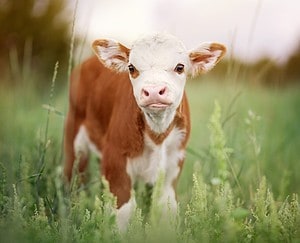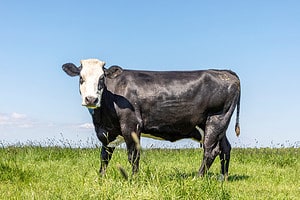The color might surprise you. The flavor keeps many coming back for more. Not only is it packed with nutrients, but it’s also highly regulated, which ensures a top-notch product. Learn about veal meat, including what it is, and five important things you should know about it!
What Is Veal Meat?
Unlike beef which comes from mature cattle, veal meat comes from calves. This meat is indiscriminate of breed or sex and specifically describes meat from calves. Nevertheless, most of the veal you buy is obtained from male calves. This is because the females are used for breeding and milk. The price of veal is higher than the price of beef obtained from older cattle, not just because of its more refined flavor but because of how nutrient-dense it is.
This type of meat is loaded with essential nutrients and has a milder flavor than other meat products, which is why it is often used in gourmet restaurants. The mild, neutral flavor is unlike the beef flavor you may be accustomed to. It has a slightly sweet flavor that is deliciously complemented by a range of seasonings, whether they be merely sprinkled on or heavily applied.
5 Things You Should Know About It
1. It’s Lighter Than You Might Think
If you’ve only heard of veal but never seen or tried it, you might initially think that it has an appearance similar to that of beef. However, it has a lighter color than you might expect. It’s lighter than beef and most other types of meat you might purchase. This is because when the meat is obtained, there’s less iron in the calf’s body. It is ultimately the iron that creates that reddish color that you are used to seeing in beef. However, when it comes to veal meat, the calf is provided with a nutritionally dense milk diet to control how much iron is in its body.

Veal is lighter in color than beef and other meats.
©hlphoto/Shutterstock.com
2. It’s Nutrient-Packed
Veal is a nutrient-dense meat that supersedes its beef counterpart. For instance, just three ounces of veal delivers over 10% of several different nutrients including protein, vitamin B6 and B12, zinc, and niacin. All of these nutrients are essential to ensure you have adequate energy, that you have immune support, and that you have healthy brain function. You get more nutrient-dense meat in smaller amounts, which helps you reach your macros more easily. All while enjoying a tender, high-quality meal. This type of meat isn’t just tasty, but it’s low in cholesterol and easy on your digestive system.
3. The Handling Process is Different
Veal calves don’t spend a lot of time outdoors, which keeps them from having to deal with the elements and also ensures that they are provided with the nutrient-rich milk diet they need. They are well-kept in clean indoor environments where they have access to plenty of water. They spend time with other calves in the same pen. Contrary to what you might envision, these aren’t cramped quarters.
Rather, all of the calves have ample space to groom themselves, stretch, and lay down as needed. Typically, veal calves are raised in family barns. Here, they have plenty of light that shines through the windows, which provides them with natural sunlight. Veal calves spend time with one another, but they are quickly separated from their parents. A few days after birth, they are placed separately so that the adult cows can return to their herd and their jobs.
4. It’s Highly Regulated
The Veal Quality Assurance Program (VQP) in the U.S. closely regulates veal meat. It starts with the care of the animal after birth. It also requires that farmers follow best practices, which include the nutritionally complete diet the calves are provided with. The regulations also stipulate the requirement of water access and dictate the cleanliness of the group pens the veal calves spend time in.
5. Vets Are Involved
Veal calves are a top priority for farmers and because of this, they usually work directly with a veterinarian to put together a plan of care. This ensures the calves are both comfortable and healthy. This partnership with a veterinarian helps to keep calves from getting stressed out and from getting sick. If a veal calf does show any signs of illness, a veterinarian immediately begins to provide it with the care it needs. With the regulations in place and the attention of a veterinarian, calves are kept as comfortable as possible during the 18 to 20 weeks during which they grow, often weighing up to 450 pounds. Around this time, they are slaughtered.
Thank you for reading! Have some feedback for us? Contact the AZ Animals editorial team.








